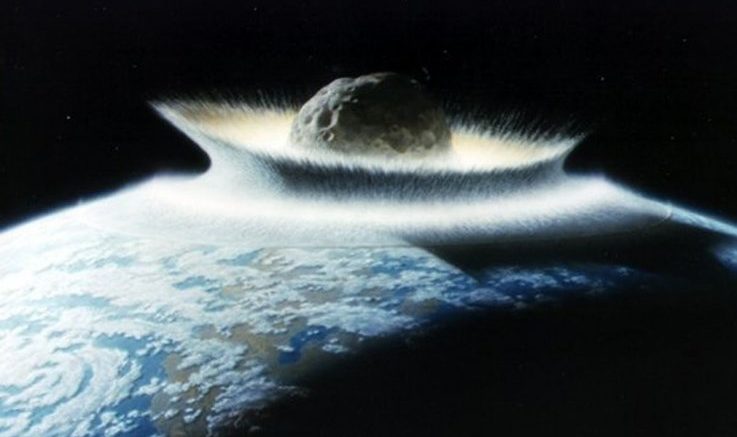Come learn about the basics of asteroid redirection including what are asteroids, why redirect them, and what options are available. Asteroids striking Earth are never a good thing.
What is an Asteroid?
The classic definition is that asteroids are minor planets.
Why asteroid redirection?
Depending on the size of the asteroid and where on Earth, the asteroid would land, the impact would vary greatly.
Regardless, it is in the best interest of humanity to redirect these asteroids before they had the opportunity to strike earth or to mitigate the damage as much as possible.
If the asteroid hits on land, there would be a huge amount of dust thrown up into the atmosphere. If it hits in water, then there would be an increase in water vapor in the atmosphere. This would result in an increase in rain resulting in landslides and mudslides.
Regionally there might be earthquakes, hurricanes and tsunamis due to the increase in kinetic energy. If the asteroid is large enough, these could be global in impact.
Although a water impact wouldn’t kill people on impact, there would still be tsunami and other risks for the closest cities in the area.
Available Asteroid Redirection Options
Nuclear Explosion
By initiating a nuclear explosive device above, on, or slightly beneath, the surface of a threatening celestial body is a potential deflection option, with the optimal detonation height dependent upon the composition and size of the object. This can allow the incoming object to either be vaporized, knocked off course, or fracture the asteroid into a smaller pieces.
Kinetic impact
The impact of a massive object, such as a spacecraft or even another near-Earth object, is another possible solution to a pending NEO impact. An object with a high mass close to the Earth could be sent out into a collision course with the asteroid, knocking it off course.
When the asteroid is still far from the Earth, a means of deflecting the asteroid is to directly alter its momentum by colliding a spacecraft with the asteroid.
Asteroid Gravity Tractor
This method sees movements to the asteroid slowly over time. A small but constant amount of thrust accumulates to deviate an object sufficiently from its course.
Ion Beam Shepherd
The method involves the use of a low-divergence ion thruster pointed at the asteroid from a nearby hovering spacecraft. The momentum transmitted by the ions reaching the asteroid surface produces a slow-but-continuous force that can deflect the asteroid in a similar way as the gravity tractor, but with a lighter spacecraft.
Focus Of Solar Energy
H. Jay Melosh proposed deflecting an asteroid or comet by focusing solar energy onto its surface to create thrust from the resulting vaporization of material, to increase solar radiation pressure and/or to amplify the Yarkovsky effect. Over a span of months or years, enough solar radiation can be directed onto the object to deflect it
Mass Driver
is an (automated) system on the asteroid to eject material into space thus giving the object a slow steady push and decreasing its mass. A mass driver is designed to work as a very low specific impulse system, which in general uses a lot of propellant, but very little power.
The idea is that when using local material as propellant, the amount of propellant is not as important as the amount of power, which is likely to be limited.
Conventional Rocket Engine
Attaching any spacecraft propulsion device would have a similar effect of giving a push, possibly forcing the asteroid onto a trajectory that takes it away from Earth.
Asteroid Laser Ablation
It is believed that focusing sufficient laser energy on the surface of an asteroid to cause flash vaporization / ablation to create either in impulse or to ablate away the asteroid mass.
How viable are these options?
Depending on the size of and how early the asteroid would be discovered would determine the different available options.
Direct methods are preferred because they are generally less costly in time and money. Their effects may be immediate, thus saving precious time. These methods would work for short-notice and long-notice threats, and are most effective against solid objects that can be directly pushed, but in the case of kinetic impactors, they are not very effective against large loosely aggregated rubble piles. Indirect methods, such as gravity tractors, attaching rockets or mass drivers, are much slower. They require traveling to the object, changing course up to 180 degrees for space rendezvous, and then taking much more time to change the asteroid’s path just enough so it will miss Earth.
What Is Being Doing About The Threat?
Organizations have started to track asteroids since the mid to late 20th century. Currently, the International Astronomical Union Minor Planet Center (MPC) is the global clearing house for information on asteroid orbits. NASA’s Sentry System continually scans the MPC catalog of known asteroids, analyzing orbits for any possible future impacts. Organizations around the world, such as NASA are tracking asteroids and the likelihood of hitting the Earth.
References And Further Reading
https://www.popularmechanics.com/space/deep-space/a18247/5-ways-to-divert-killer-asteroids/
If you’re curious about the difference between comets, asteroids, and meteors, check out our article here.

Leave a comment